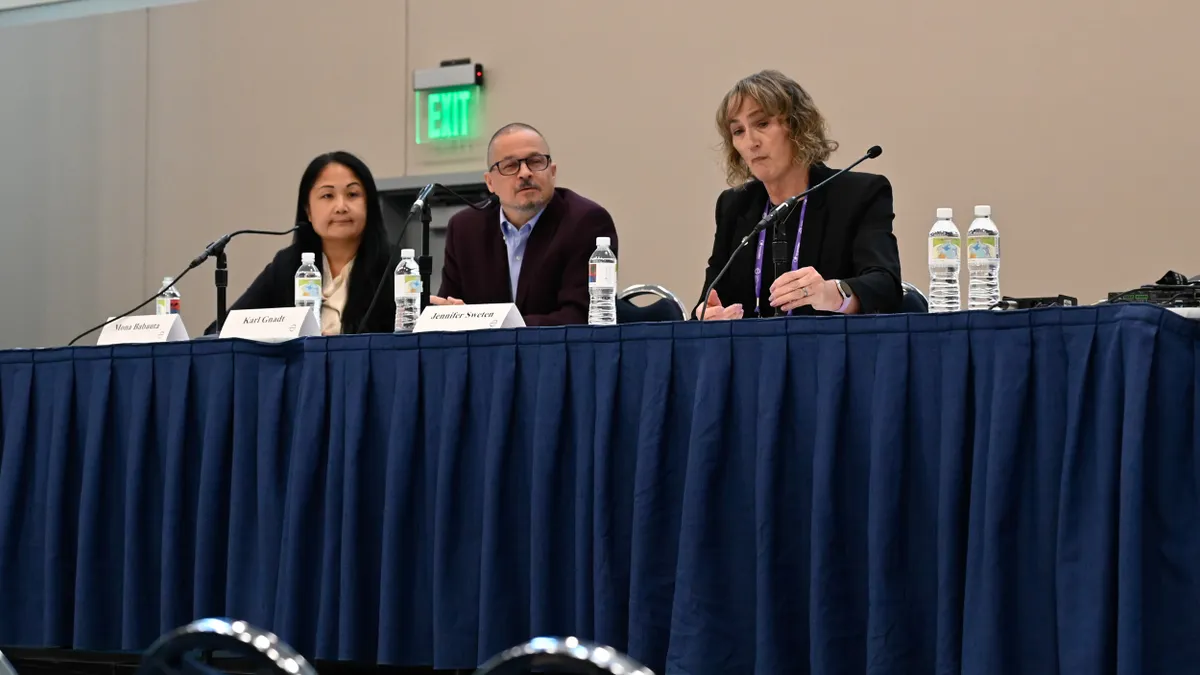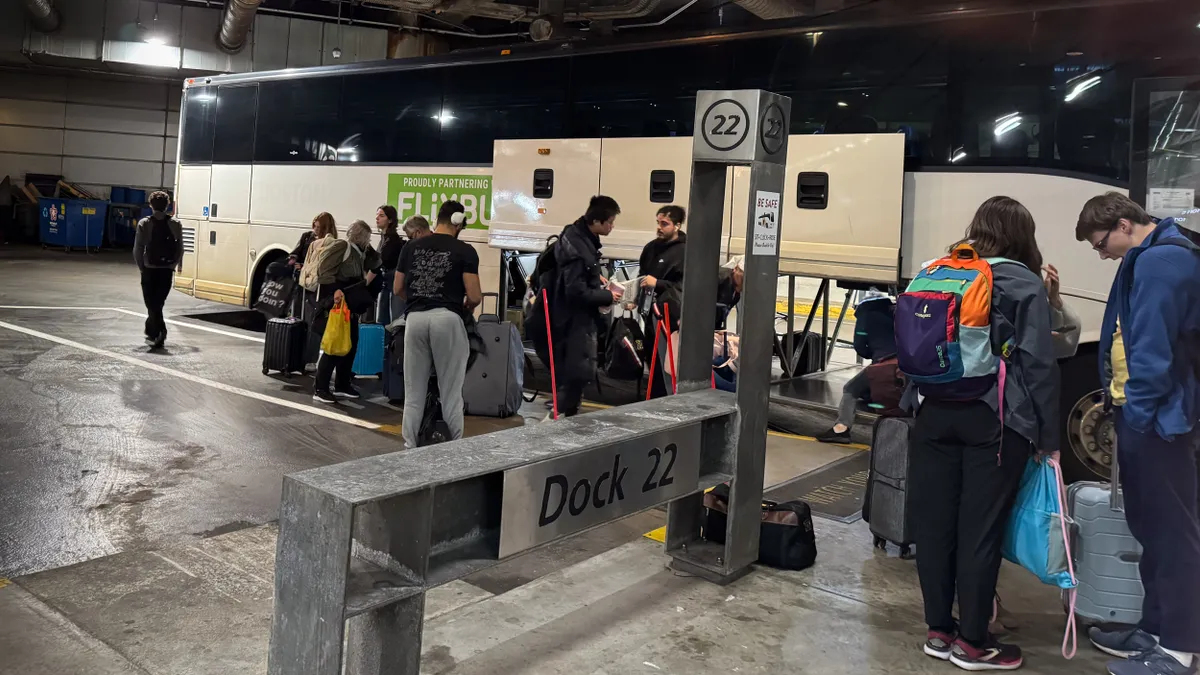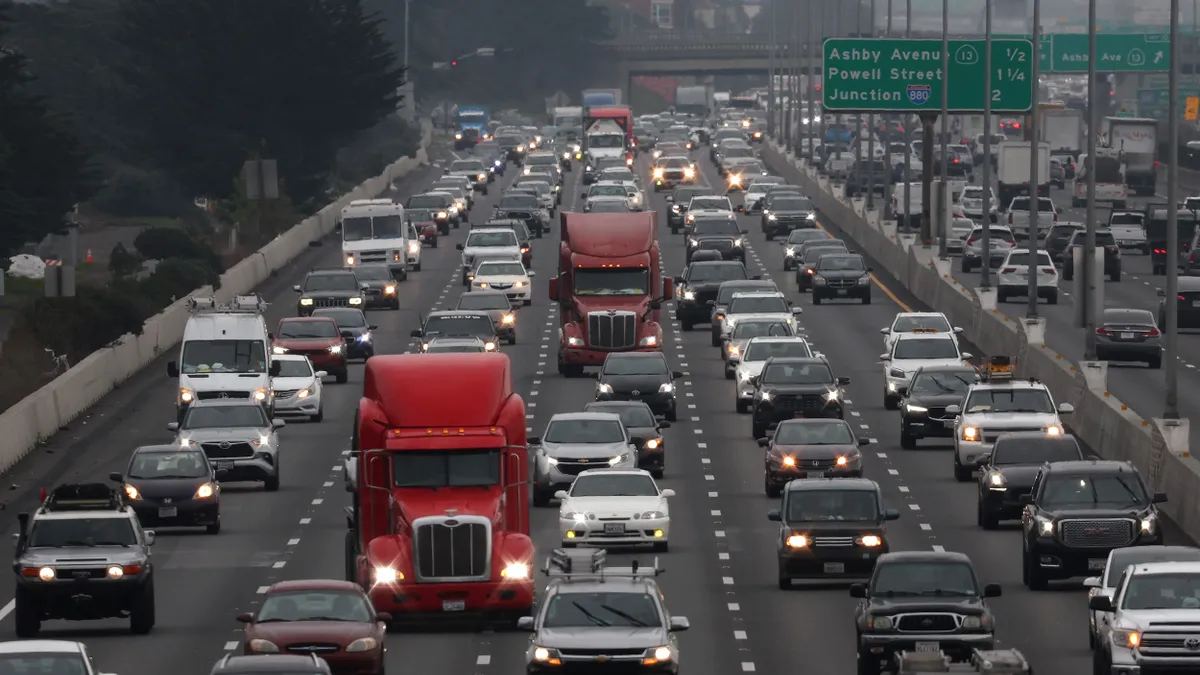For transit agencies transitioning to battery-electric or hydrogen fuel cell buses, there are many pitfalls along the road and many lessons to be learned, participants said at a panel held Oct. 1 at an American Public Transportation Association conference in Anaheim, California.
“This is every agency’s space program,” said Cliff Henke, senior vice president at consultancy WSP, referring to the U.S. efforts in space flight. He cited as challenges the small number of bus manufacturers in the U.S., escalating prices for zero-emission buses and preparing a transit agency’s infrastructure for alternative energy sources.
“Start with infrastructure,” said Jennifer Sweten, director of operations for the Missoula, Montana, Urban Transportation District, also known as the Mountain Line. The agency serves 70 square miles in the Missoula Valley with 30 buses running on 12 fixed routes. It has committed to a zero-emission fleet by 2035 and already has several electric buses on the road in the harsh winter climate of northwestern Montana.
“With a battery-electric fleet, we have range issues,” Sweten said. “I figure if we can make battery electric work in Montana, it'll work anywhere.” She said the agency has enough electric power supply for the current small fleet, but as it looks toward building a bus facility that can serve the agency for decades to come, the power demand may stress the electric infrastructure in the region. She added that the agency couldn’t get better pricing from their utilities, so it is investing in charge-management software to help reduce energy costs.
On the opposite end of the climate spectrum, SunLine Transit Agency serves the Coachella Valley in Southern California, the arid desert home to Palm Springs, where summertime temperatures regularly soar to well over 100 degrees Fahrenheit. The agency committed to hydrogen fuel cell technology and has been running hydrogen buses since 2008, said Mona Babauta, the agency’s CEO and general manager.
Babauta said SunLine collaborates with bus manufacturers to find the “magic formula” for operations that work in different climates and at different times of the year. She also noted that the agency maintains “a pretty big contingency fleet of compressed natural gas buses.”
SunLine is considering building its own hydrogen fuel production station on site, Babauta said, which is something the Champaign-Urbana, Illinois, Mass Transit District has already done. “These are really complicated projects,” said Karl Gnadt, MTD’s managing director, of the transition to zero-emission buses. He recommended that agency personnel visit other agencies that have already begun the transition to electric or hydrogen fleets. “Make sure that you've got the people resources to do it. Make sure you do training,” he said.
Both Gnadt and Sweten urged agencies to commit fully when beginning their fleet transition. “Once you get to the point to commit to the project, do it and don't consider it a pilot,” Gnadt said.
“Pilot projects do not show you how to do the whole build up,” explained Sweten. “They show you some of the shortfalls. They show you the path to your final build-up.” The transition, she said, involves “reexamining and reimagining your entire operation.”
Is the transition to a zero-emission bus fleet worth it? “In all of the work that we've done throughout the world, there is perhaps an economic payback in certain parts of the world, but not in the United States,” said WSP’s Henke.
While the Federal Transit Administration provides grants to help agencies purchase zero- and low-emission buses and to support their infrastructure, these buses can be more costly than diesels. Henke added that “in the case of hydrogen fuel and particularly electricity, in some parts of the country, the costs still do not represent a payback on a life-cycle basis.”
But it’s still the right thing to do, panelists said. “We're not doing it strictly for an economics reason,” Sweten said. Local environmental concerns such as wildfire smoke tilted the decision in favor of clean buses for her.
Referring to climate concerns from transportation emissions, Gnadt said, “We are the people that are causing the problem, and we need to do what we can to mitigate or avoid the problem.”




















